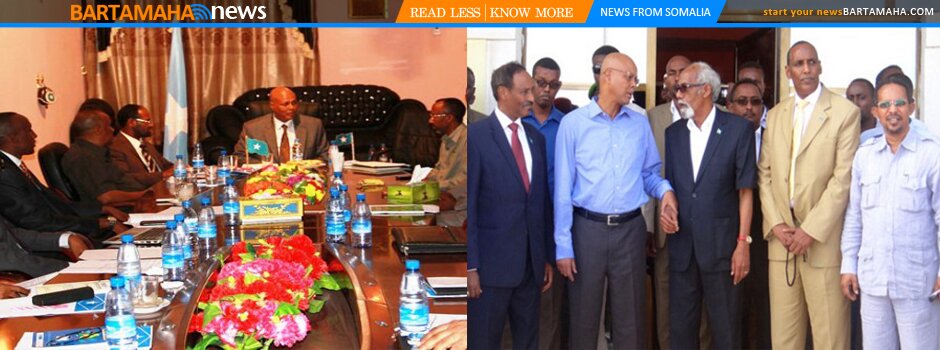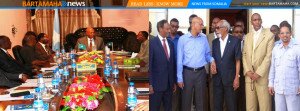A better way to fight radicalism
by Tod Robberson — Something definitely snapped inside Hosam “Sam” Smadi’s head. Everything about the 19-year-old Jordanian’s background goes against the profile of a Muslim fanatic hell-bent on inflicting a devastating blow on a large American city.
He was not particularly devout. He wore an earring, had a Facebook page, listened to techno-pop, married an American woman and occasionally enjoyed a drink or two. People like that don’t try to blow up 60-story office buildings. More often, they try to get jobs in them.
Smadi was deeply distressed emotionally, for a variety of reasons. So what went wrong in late September? Why didn’t someone intervene in Smadi’s life to stop him before undercover agents handed him a cellphone detonation device that, Smadi thought, would explode a massive bomb hidden in an SUV at Fountain Place in downtown Dallas? For law enforcers, his arrest is no doubt a great victory; disaster was averted, and someone they regard as a violent religious extremist is behind bars. But for others inside and outside the government who are focused on re-channeling radicalized youths before they become violent, this was an opportunity lost to build trust and recruit allies in the Muslim community.
In the aftermath of the 9/11 attacks, various intelligence and law enforcement agencies at the national, state and local level have been working with Muslim groups specifically to identify the people most likely to attempt a high-profile mass murder in the name of Islam. Everyone has something to gain from this collaboration, which was formalized in 2004-05 when the federal government disbursed funds for state and local governments to establish intelligence-gathering “fusion centers.”
The Muslim community has felt besieged since 9/11, constantly regarded with suspicion and often facing scrutiny and restrictions that other Americans rarely are subject to. Helping authorities identify the real threats is seen by many law-abiding Muslims as the quickest way to ease the pressure they’re under. For law enforcers, fusion centers provide crucial street-level intelligence to zero in on real plotters instead of wasting time and energy investigating people whose only “crime” is being Muslim.
The stated goal of fusion centers is to make better use of “nontraditional collectors of intelligence, such as public safety entities and private-sector organizations” whose information can be “fused” with other law enforcement data to provide a more complete picture of a developing threat, the Department of Homeland Security says. But it can be effective only when Muslims feel they’re working toward the same goal as the government. Smadi’s case didn’t reinforce that sense because it gave such a high priority on launching a headline-grabbing sting operation whose result was, once again, to send law-abiding Muslims running for cover.
The fact that Smadi’s case broke at the same time the FBI averted other attacks in New York, Illinois and Boston once again has sounded the alarm bells and calls for a crackdown. Once again, the nation’s attention is focused on what many regard as the Muslim enemy in our midst.
“We feel under siege. There is open season on our faith,” businessman Hadi Jawad told Dallas Morning News reporter Selwyn Crawford.
Smadi has pleaded not guilty, but according to the FBI, he was determined to carry out this bombing. “Throughout the investigation, undercover FBI agents repeatedly encouraged Smadi to re-evaluate his interpretation of jihad, counseling him that the obligations a Muslim has to perform jihad can be satisfied in many ways. Every time this interaction occurred, Smadi aggressively responded that he was going to commit significant, conspicuous acts of violence as his jihad,” the FBI said in a written statement.
Very little of what he allegedly sought to do reflects the teachings of Islam. Rather, it’s the thinking of a disturbed and confused teenager. Although he videotaped a message swearing allegiance to Osama bin Laden, there is no evidence to suggest he had links to al-Qaeda or any other network of extremists. Could the case have been handled in a more low-key manner, achieving the short-term objective of getting Smadi off the streets but not inflicting more damage to law enforcement’s tattered relationship with the Muslim community?
This case has an ironic twist, because it was the FBI that arranged all of the bomb components and gave Smadi the plans to carry out an attack he probably would not have been able to do by himself. They handed him the fake detonation device. They were the enablers.
The group that was best situated and motivated to stop Smadi long before he reached for the detonator was the Muslim community. People could have, and would have, intervened but for the failure of U.S. government agencies to coordinate as they were supposed to – specifically to avert such situations, says Mohamed Elibiary, president and CEO of the Carrollton-based Freedom and Justice Foundation.
If the prosecution proves its case, Smadi will probably spend the next 20 or so years of his life in prison for what seems like an impulsive act of extreme stupidity. Good riddance, many non-Muslims probably say. But I think of all the stupid, impulsive things I did at that age and thank my lucky stars that friends and relatives were around to keep me from going off the deep end.
Had the fusion system worked, a quiet process, far from the media frenzy, would have unfolded in which Smadi’s relatives and respected Muslim clerics organized to distract him and keep him productively busy long enough for his impulsive tendencies to be redirected toward nonviolent means of expression.
It’s boring stuff. No bomb, no big international plot, no hidden cell to be uprooted by SWAT teams. And without the screaming headlines that accompany those events, there’s far less commotion for other would-be radicals to be inspired by. It’s all designed to be low-key.
“You can find radicalized or at-risk youth all over the place,” says Elibiary. He has successfully organized interventions in the past, preventing youths from throwing away their lives in the name of violent jihad while potentially averting bloodshed. “The key is not getting them to give up their worldview. It’s getting them to disengage from the fight.”
Lots of Muslims are angry at the West, America in particular. But only a tiny fraction thinks that exploding bombs is the way to fix things, and even fewer act on their impulses. Non-Muslims tend to focus on the radical rhetoric about protecting Islam from Western evils. Blowing up skyscrapers or flying airplanes into buildings are inherently irrational because they achieve exactly the opposite effect, prompting the Western world to attack and endanger Muslims. These forms of violence are acts of lunacy that the perpetrators have twisted to fit into an Islamic framework that exists only in their minds. Delve a bit deeper into their psyches, though, and you’ll find a lot of other factors coming into play that have little if anything to do with Islam but lots to do with mental illness.
These same psychological ingredients prompt radical animal-rights activists to rationalize blowing up butcher shops and animal-testing laboratories, or anti-abortion radicals to defend the sanctity of life by vowing to kill abortion clinic doctors.
Quintan Wiktorowicz, a noted academic who studies Muslim extremists, writes that many radicals reach the level of violent fanaticism after experiencing a “cognitive opening.” Usually, the opening occurs when a person experiences a profoundly traumatic event. If that person happens to cross paths with members of a cult or radical group at the time of a cognitive opening, he becomes highly susceptible to being drawn in and manipulated. The person is desperately searching for grounding and belonging. Like Smadi, such people often will do anything to prove themselves worthy to gain membership and acceptance.
The pool of potential radical recruits is “quite deep and expansive,” Wiktorowicz writes in his book, Radical Islam Rising: Extremism in the West. In the Middle East, harsh political repression and socioeconomic discontent play significant roles, while in the West, he writes, “many Muslims have experienced an identity crisis that makes them question what it means to be a Muslim in a non-Muslim country. … For some, this creates openness to new identities, communities and ideologies.”
Immediately after the 9/11 attacks, I flew to Jordan and Lebanon as a correspondent for this newspaper. I interviewed close relatives of radicalized “Afghan Arabs” in Jordan whose parents were shocked to learn that their sons might have linked up with al-Qaeda. The relatives said police harassment, constant open surveillance and arrests did nothing to make the youths moderate their views. Instead, they were galvanized and driven deeper toward extremism, the parents told me. Rather than make them rethink their radical path, such tactics became the justification for that path.
In Lebanon, I sought out the family and friends of Ziad Jarrah, one of the hijackers of United Flight 93, which crashed into a field in Pennsylvania on 9/11. Mohamed Ibrahim Osman, an old friend from Jarrah’s Christian secondary school in Beirut, described Jarrah as not particularly devout in his youth. He had girlfriends and enjoyed an active social life. “He didn’t even pray,” Osman said. “I never, never, never, never thought he could do this.”
Entering the Jarrah family’s house in Lebanon’s Beqaa Valley, I was immediately struck by a disheveled scene of empty liquor bottles atop tables – hardly what I expected from the family of a guy who had just given his life to attack the enemies of Islam. It was clear that his parents and uncles had been doing some heavy drinking in recent days as they grappled with their son’s role in the most deadly terrorist attack in U.S. history.
His father, Samir Jarrah, displayed the pills he was taking to calm his nerves. Nazer Jarrah, Ziad’s uncle, said the signs of trouble started after Ziad moved away to Germany in the late 1990s. He lurched from a partying lifestyle toward engagement to a Turkish woman, then toward greater involvement in a Hamburg mosque with a small group of Islamists. Nazer Jarrah said troubling signs emerged around 1999, when Ziad’s correspondence indicated he was becoming increasingly devout. When he visited Lebanon, his only interest was reading the Quran and going to mosque for prayers.
At one point, the father and uncle became so concerned about Ziad’s behavior that they sought the help of top Lebanese government officials to alert international authorities, fearing he was planning something violent. No one took them seriously, Nazer said.
I’ve often wondered what might have prompted Ziad’s cognitive opening. Once, while staying in a Berlin hotel while working on a story about legalized gay marriage, I noticed that every night around 10, the television stations changed from family-oriented programming to a bizarre display of bare-breasted women hawking various telephone chat services. I imagined what it must have been like for someone like Ziad to see this for the first time as he coped with the loneliness of living abroad while questioning his own immersion in Western decadence.
After the July 7, 2005, attacks on London’s transportation system, I traveled to Leeds, England, to interview friends and family members of the four young men who staged the bombings. Amazingly, few were surprised that the youths did it, knowing where they were hanging out (in an upstairs room of a local Islamic bookstore), that they were receiving religious instruction from a known zealot and were becoming increasingly radicalized. But the friends felt they had nowhere to turn for help.
Smadi’s family was shocked at news of his alleged plot, although they had long suspected he was emotionally unstable. His cognitive opening appears to have been the double-whammy effect of his mother’s death and his move to the United States at age 17. The foundations of his life had crumbled, and he seemed to be looking for a new mission, even if it meant going out in a blaze of glory.
Whether the venue is Dallas, Hamburg, London or Madrid, the people most attuned to radicalizing influences among Muslims are not members of the law enforcement community. It’s the Muslims who attend local mosques and gossip in coffee houses. If something is afoot with a religious leader or a troubled youth, they’re most likely to catch wind of it first. Should they intervene? Should they sit on the information or share it with authorities?
From a non-Muslim perspective, the answer might seem obvious – of course they should! But from American Muslims’ perspective, the answer isn’t so easy. They risk being ostracized as spies within their own communities. If gung-ho local law enforcers see them interacting with suspected radicals, they risk being targeted for investigation and being swept into a national terrorism-intelligence database. All of a sudden, good Samaritans find they can’t board airliners or they’re being hauled in for questioning. The shadow of Guantánamo and renditions looms large for them.
For the system to work, law enforcers and Muslims committed to fighting violent extremists must be working from the same play book, which was the whole idea behind creating the fusion centers. The fusion center concept needs improvement and refinement, especially regarding the way true intelligence is distinguished from tips, rumors and police acting on gut feelings that an individual looks suspicious. If law enforcers want to develop better intelligence sources, they need to rethink the merits of high-profile sting operations and ask whether a subtler approach would achieve their goal while helping law-abiding Muslims achieve theirs.
American Muslims already have stepped forward to help the U.S. government do its job better, and they should continue to do so enthusiastically. If they are repulsed by harassment and a resurgence of anti-Muslim ranting, we risk wiping out the cooperative spirit this country needs to fend off the next big attack.
____________
Tod Robberson is an editorial writer for The Dallas Morning News. This column reflects his personal opinion. His e-mail address is [email protected]
Comments
comments
 Calendar
Calendar







































